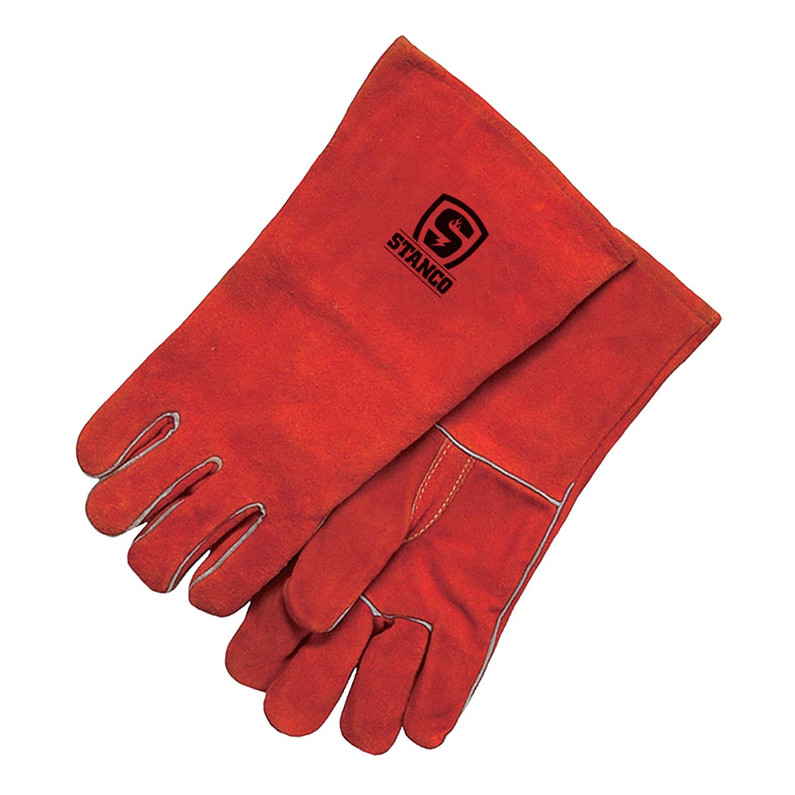The Right Fit for the Heat: Choosing Your Welding Gloves for Stick, MIG, and TIG
In the fiery world of welding, your hands are constantly on the front lines. They guide the torch, feed the wire, and manipulate the electrode, all while being exposed to intense heat, sparks, spatter, and harmful UV radiation. That's why welding gloves are far more than just work gloves – they are a critical piece of personal protective equipment (PPE), specifically engineered to shield your most valuable tools: your hands.
At Your Safety Company, we know that one size (or glove type) does not fit all in welding. The demands of Stick, MIG, and TIG welding processes are vastly different, and so are the gloves designed to protect you in each.
The Core Purpose of Welding Gloves
Regardless of the welding process, all quality welding gloves share fundamental protective goals:
-
Heat Resistance: Insulating hands from radiant and contact heat.
-
Spark & Spatter Protection: Shielding skin from molten metal droplets.
-
Abrasion & Cut Resistance: Protecting against sharp edges and rough materials.
-
UV/IR Protection: Filtering harmful light from the arc.
Now, let's explore how these objectives are met differently for each welding discipline.
1. Stick Welding (SMAW) Gloves: Maximum Protection for Heavy-Duty Work
Stick welding (Shielded Metal Arc Welding) is often the most intense, producing significant heat and heavy spatter. Your gloves for this process need to be the workhorses of your PPE.
-
Characteristics: These gloves are typically thick, heavily insulated, and robust. They prioritize maximum protection over dexterity.
-
Materials: Commonly made from tough, durable leathers like cowhide or elkskin, known for their excellent heat and abrasion resistance. The entire glove, including the gauntlet cuff, is usually thick split leather.
-
Cuff: Features a long gauntlet cuff to provide comprehensive forearm protection from heat and spatter.
-
Look for: Reinforced palms and thumbs for extra durability.
-
Example: The Stanco 2020 Red Leather Welding Gloves offer heavy-duty protection with a gauntlet cuff, ideal for stick welding and general fabrication.
2. MIG Welding (GMAW) Gloves: The Balance of Dexterity and Protection
MIG welding (Gas Metal Arc Welding) involves a continuous wire feed, requiring more finger dexterity than stick welding, but still dealing with moderate heat and spatter.
-
Characteristics: MIG gloves strike a balance between protection and dexterity. They are more flexible than stick gloves but still offer substantial heat resistance.
-
Materials: Often combine softer, more pliable leather like grain cowhide or pigskin on the palm for better feel, with durable split leather on the back and gauntlet for added protection.
-
Cuff: Typically feature a gauntlet cuff to protect the wrists and forearms.
-
Look for: Good insulation without excessive bulk, and often reinforced areas for longevity.
-
Example: The Portwest MIG Welders 320 Grain Leather Reinforced Gauntlet Gloves are designed for this balance, offering both control and robust protection. The Caiman® Premium Cow Grain TIG/MIG Welder's Gloves also exemplify this versatility, suitable for both TIG and MIG applications.
3. TIG Welding (GTAW) Gloves: Precision, Sensitivity, and Control
TIG welding (Gas Tungsten Arc Welding) is renowned for its precision, producing beautiful, clean welds with minimal spatter and lower heat output compared to stick or MIG. This process demands exceptional finger sensitivity and control.
-
Characteristics: TIG gloves are thin, highly sensitive, and prioritize dexterity above all else. They allow for precise manipulation of the filler rod and torch.
-
Materials: Made from soft, pliable leathers like goatskin, deerskin, or kidskin on the palm and fingers. The back of the glove may be split cowhide for added protection without sacrificing too much flexibility.
-
Cuff: Often feature a shorter cuff or a flexible "Kontour Wrist™" design with a hook & loop closure for maximum wrist mobility. While some TIG gloves come with longer gauntlets for increased protection, the focus remains on feel.
-
Look for: Kevlar® stitching for enhanced durability against heat and abrasion, and sometimes a Para-Aramid cut-resistant lining for added safety.
-
Example: The Ironcat® AR Premium Kidskin Leather TIG Welder's Glove offers exceptional tactile feedback and cut protection. Similarly, the Caiman® Premium Goat Grain TIG/Multi-Task Welder's Glove with 4" Kontour Wrist™ Cuff provides excellent dexterity and versatility.
Key Factors When Choosing Any Welding Glove
Beyond the specific process, consider these universal factors:
-
Material Quality: Premium leathers offer better feel, durability, and protection.
-
Stitching: Look for heat-resistant threads like Kevlar® for longer glove life.
-
Lining: Some gloves offer additional linings for insulation or cut resistance.
-
Fit: Gloves should fit snugly but comfortably, allowing full range of motion without being baggy.
-
Safety Standards: Always check for relevant certifications like ANSI and CE markings, which indicate compliance with safety performance requirements.
Care and Maintenance
Proper care extends the life of your welding gloves:
-
Clean Regularly: Remove dirt and debris. For leather, use a damp cloth, avoid harsh chemicals.
-
Inspect for Damage: Before each use, check for holes, tears, worn seams, or stiff spots. Replace damaged gloves immediately.
-
Store Properly: Keep gloves dry and away from direct sunlight or extreme temperatures.
Weld with Confidence, Weld with the Right Gloves
Choosing the correct welding gloves for your specific process is a non-negotiable step toward safer, more efficient work. By matching the glove to the task, you ensure optimal protection without sacrificing the control and dexterity your craft demands.
Explore our extensive selection of Stick, MIG, and TIG welding gloves from leading brands like Stanco, Ironcat, Caiman, and Portwest at Your Safety Company. Find your perfect pair and weld with confidence!
Recent Posts
-
Beyond the Big Box: Why Yoursafetycompany.com is the Smarter Choice for Your First-Aid Program
When it comes to workplace first aid, ensuring your business is compliant and your employees are pro …1st Jan 2026 -
The 2026 Safety Checklist: Is Your Crew Truly Protected?
As we move into the new year, it’s the perfect time to look past the daily grind and evaluate the ge …23rd Dec 2025 -
Beyond the Buzz: Why Proper Hearing Protection is Non-Negotiable on Your Job Site
On any given workday, the sounds of progress—drills, saws, heavy machinery, and even loud conversati …22nd Dec 2025



